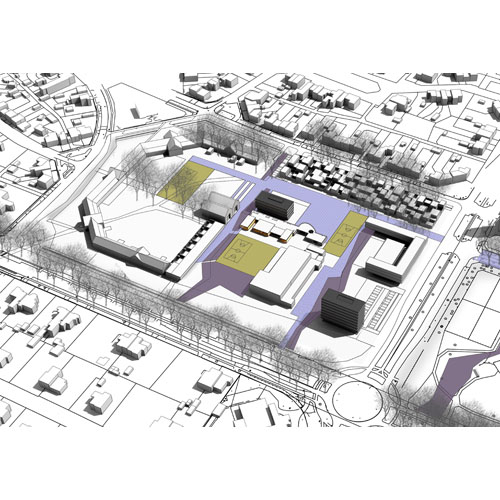Studio Associato Bernardo Secchi Paola ViganòArchitecture | Urbanism | Landscape |
| masterplan for the Saint-Jean School area in Genk - international competition [first prize] |
| client: | municipality of Genk |
| program: | masterplan |
| date: | 2005-2007 |
| consultant: | |
| team: | |
The Waterschei area, in the town of Genk, has a strong garden-city concept which represented a very clear urban idea, able to resist to the dramatic change of its role in the city and to local population substitution. Designed and realized on philanthropic purpose for the families of mine workers of nearby plants, Waterschei had since its establishment a center composed by, like other coeval examples, a school, two colleges, the church and port fields. From the beginning the center was planned, by Verwilghen and after by Vautquenne, where the both major axes of the city cross. The place was designed as a campus where the most important public equipment were to be placed. The mines shut-down and the dispersion of equipment in the city of Genk, leaves Waterschei today without a role and a precise significance: the campus is an empty space searching for a new identity. What we proposed was the reinforcement of the role, almost evident, of the site as a central place and reference in the urban structure of Waterschei: a sort of podium. |
|

studio 05
<< bernardo secchi | paola viganò ![]()